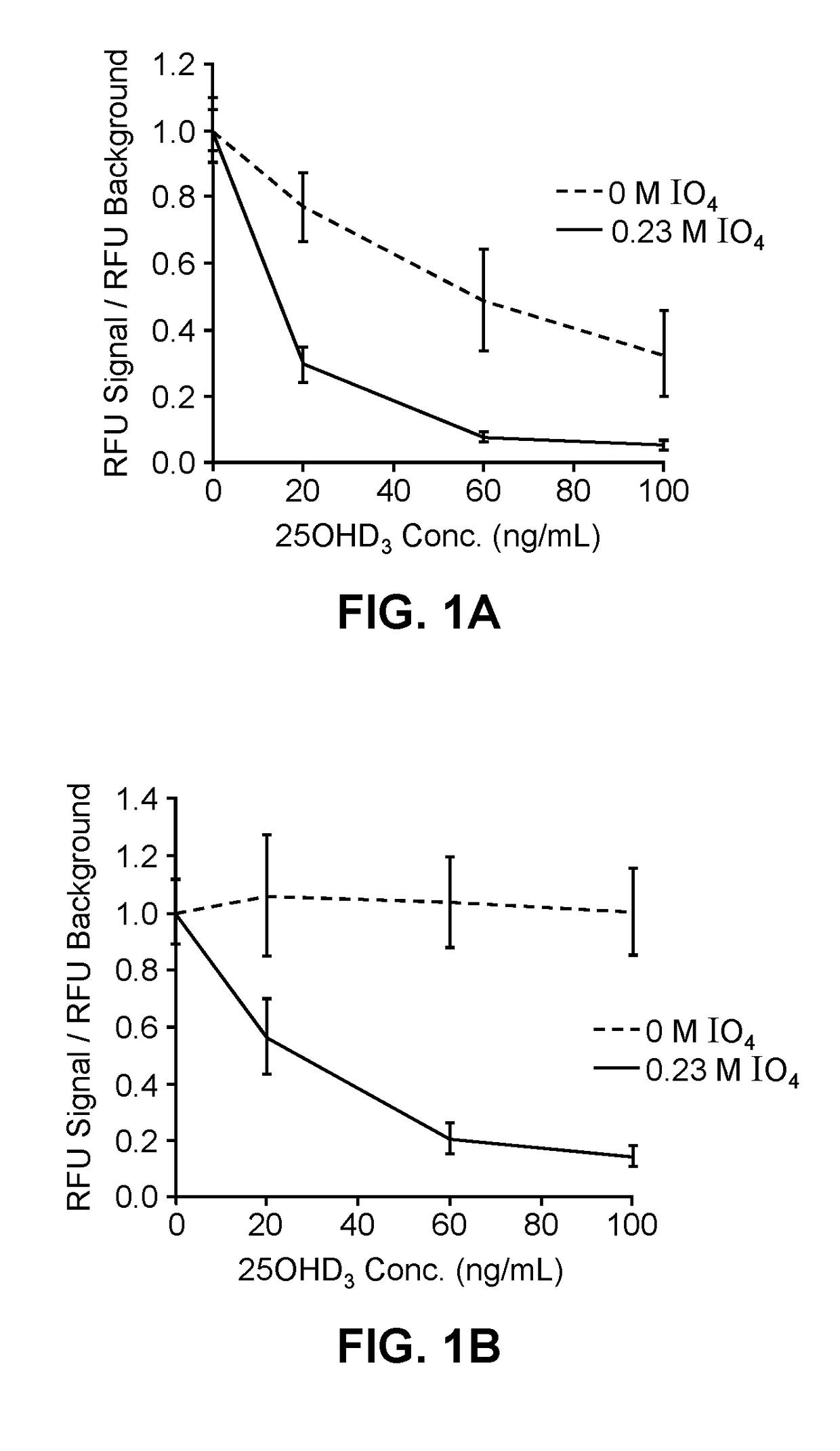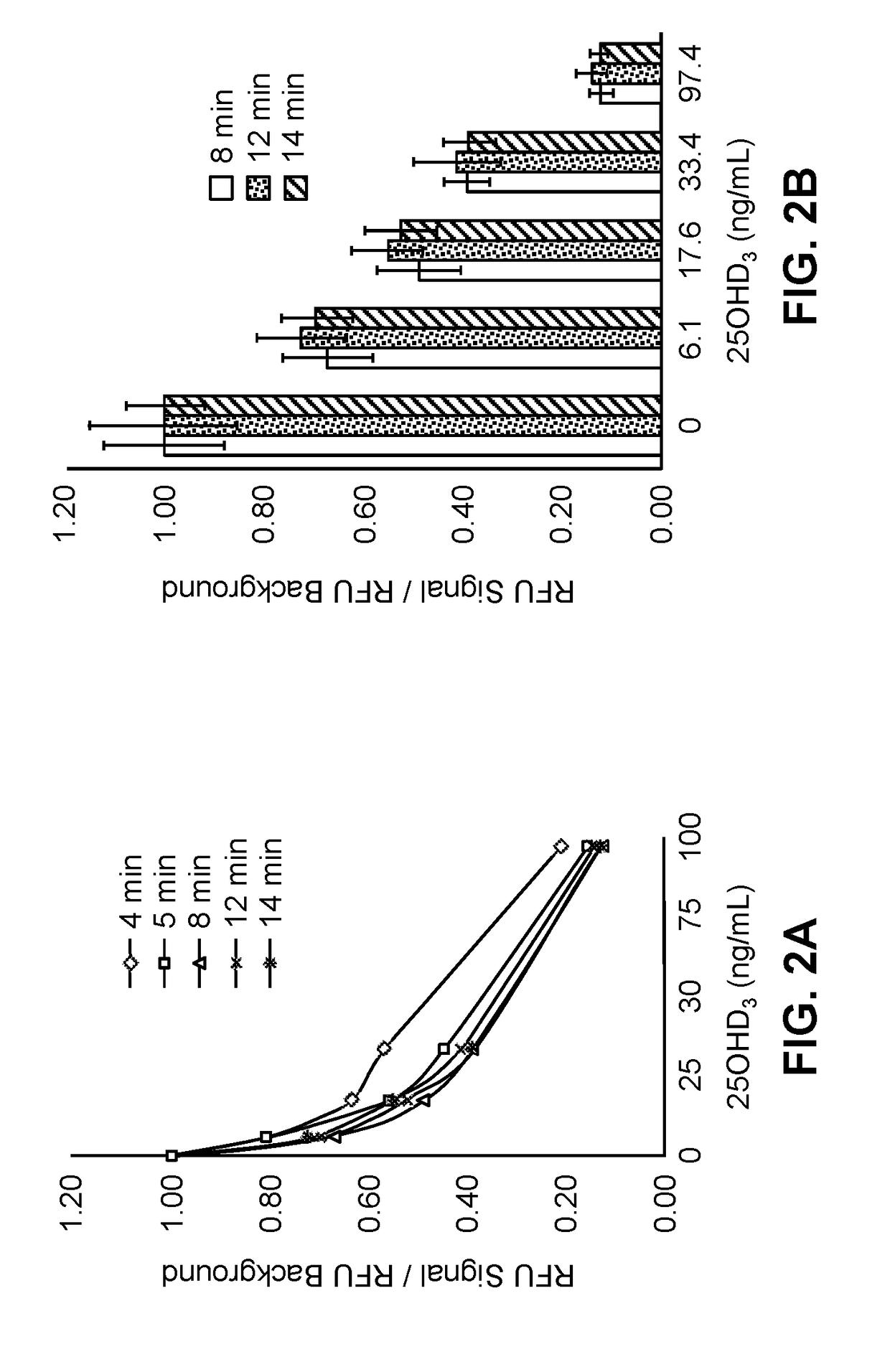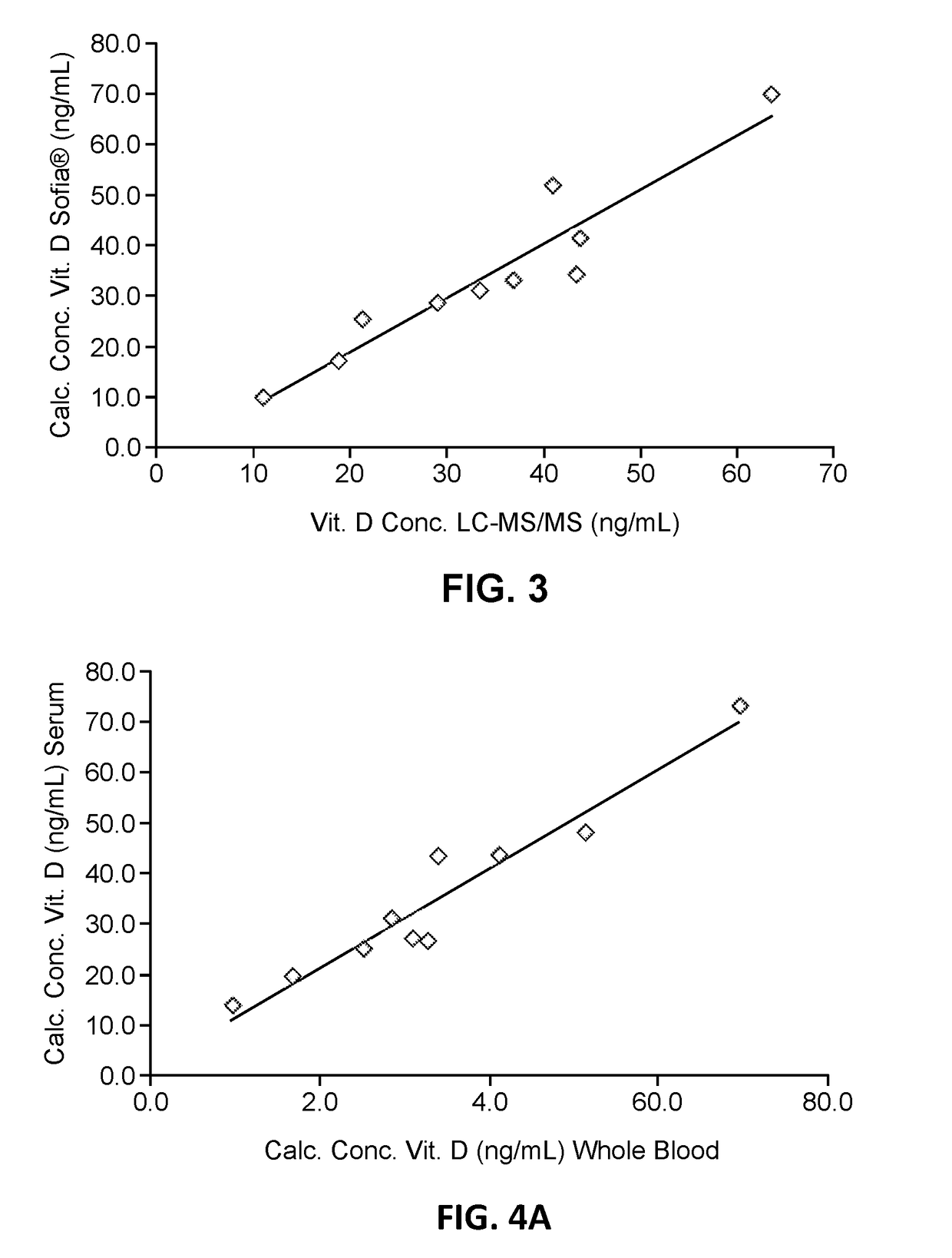Processing reagent and use thereof in assays for detection of analytes associated with a binding protein
- Summary
- Abstract
- Description
- Claims
- Application Information
AI Technical Summary
Benefits of technology
Problems solved by technology
Method used
Image
Examples
example 1
Sample Preparation Using a Processing Reagent Comprising Metaperiodate
[0152]A processing reagent was prepared by dissolving sodium metaperiodate (NaIO4) in water (0.23 M IO4).
[0153]Samples were prepared by spiking a known amount (20 ng / mL, 60 ng / mL and 100 ng / mL) of 25OHD3 (vitamin D metabolite) QC standard into a fixed volume of albumin diluent and of human serum. The samples were processed with the processing reagent or, as negative control, a processing reagent lacking the metaperiodate (0M IO4) by combining the sample and the processing reagent and incubating for 40 minutes at room temperature.
[0154]After incubation, aliquots from the samples were tested in replicates of ten (n=10), each aliquot placed on an immunoassay test device with an antibody for the vitamin D metabolite attached to fluorescent label. Signal from the fluorescent label present in a test zone of the immunoassay device, which correlates with the amount of vitamin D metabolite in the test zone, was measured us...
example 2
Processing Reagent with Heat as a Catalyst
[0155]Samples with vitamin D3 metabolite spiked at known concentrations (6.1 ng / mL, 17.6 ng / mL, 33.4 ng / mL and 97.4 ng / mL) into human serum were prepared.
[0156]A processing reagent was prepared by dissolving sodium metaperiodate (NaIO4) in water (0.23 M IO4).
[0157]The samples were processed by combining sample and processing reagent at a 1:8 ratio to form a mixture. The mixture was heated to a test temperature (25° C., 37° C., 40° C., 55° C., 65° C., 75° C. and 85° C.) for a time period of 4 minutes, 6 minutes, 8 minutes, 12 minutes or 14 minutes. The concentration of vitamin D3 metabolite in the processed samples was measured using an optical reader. Results for the samples processed using a 55° C. temperature (as representative of the data) are shown in Table 2 and in FIGS. 2A-2B.
TABLE 2TimeConc.SignalCondition[min]Sample ID[ng / mL][RFU]STDEV% CVS / BST-DEV% CV14Depleted Serum0152,76615,49710.1%1.000.1010.1%2Unit #326.1122,15113,37911.0%0.800...
example 3
Processing Reagents with Various Metaperiodate Concentrations
[0158]Processing reagents were prepared by dissolving sodium metaperiodate (NaIO4) in water to provide processing reagents with metaperiodate concentrations ranging from 0.1M to 0.6M IO4.
[0159]Samples were prepared from human serum and vitamin D3 metabolite. The samples and processing reagents were combined in dilution ratios of sample to extraction reagent ranging from 1:1 (equal parts of each) to 1:15 (1 volume of sample to 15 volumes of processing reagent), and incubated at 55° C. for 10 minutes. Concentration of vitamin D3 metabolite in the processed samples was measured using a competitive inhibition immunoassay test strip for vitamin D and a commercially available instrument (Sofia® Analyzer, from Quidel Corporation). Lower dilutions such as 1:1 and 1:3 in some cases gave matrix effects with some patient samples which were not observed with higher dilutions. To assess accuracy of the measurements, the human serum sam...
PUM
 Login to View More
Login to View More Abstract
Description
Claims
Application Information
 Login to View More
Login to View More - R&D
- Intellectual Property
- Life Sciences
- Materials
- Tech Scout
- Unparalleled Data Quality
- Higher Quality Content
- 60% Fewer Hallucinations
Browse by: Latest US Patents, China's latest patents, Technical Efficacy Thesaurus, Application Domain, Technology Topic, Popular Technical Reports.
© 2025 PatSnap. All rights reserved.Legal|Privacy policy|Modern Slavery Act Transparency Statement|Sitemap|About US| Contact US: help@patsnap.com



